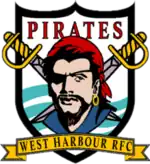 | ||
| Full name | West Harbour Rugby Football Club (1995–) | |
|---|---|---|
| Nickname(s) | Pirates | |
| Founded | 1900 as "Western Suburbs RFC" | |
| Location | Concord, Sydney | |
| Ground(s) | Concord Oval (Capacity: 5,000) | |
| President | Tom Andrews | |
| Coach(es) | Mark Gudmunson | |
| League(s) | Shute Shield | |
| ||
| Official website | ||
| westharbourrugby | ||
The West Harbour Rugby Football Club is a team in the Shute Shield, the premier club rugby union football competition in New South Wales. The club is based in Concord in the Inner West of Sydney, and plays home matches at Concord Oval. Concord holds a place in rugby history as a venue for the inaugural Rugby World Cup in 1987. West Harbour's major sponsor is Burwood RSL and post match functions are held at Club Burwood. In 2020, the Pirates would play out of Drummoyne Oval as Concord Oval being NRL club Wests Tigers' training ground, the venue was deemed off limited for people in excess of the "bubble".
Club information
- Uniform colours: Black, White and Red
- Premiership Titles: 2 titles: 1902, 1929
Club history
Beginnings
West Harbour R.F.C. was founded in 1900 as Western Suburbs D.R.U.F.C after an amalgamation between Burwood and Concord rugby clubs. The club originally fielded only two grade teams but still won the Sydney Premiership at its third attempt in 1902. Since then the club has won one other championship in 1929.
The Club’s name was changed to Western Suburbs to satisfy municipal aldermen when it sought a lease on St Lukes Oval, later Concord Oval. Western Suburbs’ boundaries were far-reaching in its early days because the club could draw on players from Concord to the Harbour, south to Port Hacking, north to the Parramatta River, and west to the Blue Mountains. When Parramatta, St George, Drummoyne, Gordon and Eastwood joined the competition these boundaries were reduced.
Between the Wars
Western Suburbs enjoyed a golden era after the war when Secretary Francis Joseph Herlihy co-opted Tom.S.R (Iron Guts) Davis, Larry Wogan, and Charlie Rea to help lift the club’s fortunes. They built a playing strength that enabled Western Suburbs to figure prominently in the competition for years and to win the competition in 1929
The brothers Geoff (1929) and Keith Storey (1936) entered international football from Western Suburbs followed by Sid King (1929), M.R.Blair (1931), T.S.Lawton (1929), A.Thorpe (1929), P.K.Collins (1937), R.L.F.Kelly (1936), R.E.M.McLaughlin (1936), T.P.Pauling (1936), and Cecil Ramalli (1938). Phil Hardcastle was an established Test player when he joined the club from Easts in 1948.
Relegation and Promotion
Western Suburbs were unceremoniously relegated to the second division in 1952 and fared poorly until promoted back into 1st Division in 1966. It was at this point that the club’s fortunes changed when Rufus Miahere joined as 1st Grade coach in 1970. Miahere began with seven wins in 1971 and eight wins in 1972. In 1973 he lifted the Club back to the glory it had enjoyed in the 1930s by winning 17 matches in a row. Western Suburbs won the Club Championships that year and the season was flawed only by a loss to Randwick in the Grand Final. That year Laurie Monaghan became the Club’s first test player since World War II, followed shortly after by one of Sydney’s true Rugby characters, Mick Ellem.
The Club was once again relegated to 2nd Division in 1980 and then promoted back to 1st Division in 1981. In 1982, the Club had discussions with the Sydney Rugby Union regarding the upgrade of Concord Oval. The Club made a donation of $250,000 to the NSWRU, which allowed the State Government to provide a further $1 million and saw Concord Oval transformed into a world class rugby venue, which in 1987 saw more than 25,000 people attend the World Cup semi-final match between Australia and France.
Resurgence and Professionalism
The 1980s and '90s saw a resurgence in the Club’s strength. Stephen James represented Australia in a number of Test series from 1986 and Fili Finau wore the green and gold on a French Tour in 1993.
In 1995, the Club changed its name to the West Harbour Rugby Football Club to more truly reflect the Club’s location in the inner west of the harbour city. In 1997, Fili Finau once again represented Australia, this time against New Zealand in the Bledisloe Cup. Jason Madz and Fili Finau also featured prominently for the NSW Super 12 side during this period.
Steve Devine represented NSW and Australia U/21s and played with the Waratahs before signing a Super 12 contract with the Auckland Blues. Steve was then selected as a member of the All Blacks eventually playing 13 tests for New Zealand. Pierre Hola capped off a fine 2001 season by being selected in the Tongan national team and was a member of the Tongan 2003 World Cup Squad.
In 2000/01 Des Tuiavii played for the ACT Brumbies before taking up a NSW Waratahs contract for the 2002/03 seasons. Des won both the Sydney Morning Herald’s Player of the Year and the NSWRU Ken Catchpole Medal in 2001 and played his 100th 1st Grade game for West Harbour in 2003. Des finished a remarkable 2003 season by playing for the Samoan side in the 2003 World Cup.
In the early to mid 2000s, West Harbour had a number of players in the NSW Waratah and Junior Waratah squads including Lote Tuqiri, Timana Tahu, Chris O’Young and Elia Tiqiri all represented the Waratahs in 2004. Chris Siale and Rodney Blake represented the Australia U/21 side in the IRB Championships in Scotland. Both subsequently signed Super 12 contracts.
Seven West Harbour players Penny Anderson, Louise Ferris, Charmain Smith, Debby Hodgkinson, Tui Ormsby, Nyree Osieck, Pearl Palaialii represented the Australian Wallaroos at the Women’s Rugby World Cup in Spain in 2002. Debby Hodgkinson was named the SMH “Player of the Year” for the 2004 season.
The Current Era
Since 2010, the Club’s fortunes have been mixed with periods of strong success and frustrating disappointments. With a seemingly transient playing population and a number of successive short term presidents and coaches, the Club has lacked a great deal of stability and has seen a high turnover of players.
The tenure of experienced coach, Tod Louden, which came to an end at the culmination of the 2018 season saw another mass exodus of players. Yet the Club’s newly appointed board acted quickly to engage long time club man, Mark Gudmenson, as Head Coach, who in turn was successful season in bringing a sense of stability to the Club for the 2019 season driven by a competitive 1st Grade team.
West Harbour is leaving Concord Oval in the 2020 season for two years as Canada Bay Council build a new state of the art stadium. The Club will be playing its home matches at Drummoyne Oval for the next two years, after which time West Harbour will return to Concord Oval, which will be the envy of the eleven Clubs in the Shute Shield.
Representatives
Overall 48 players who have played for the Club have gone on to represent the Wallabies, along with the large number of Wallabies and Wallaroos representative players. Due to the diverse nature of West Harbour Rugby Club, 36 players have gone on to represent other nations in international rugby including Samoa, Tonga, Fiji, Wales, Ireland, Scotland, New Zealand, the Philippines, Malta, Croatia and Lebanon.
89 players have been selected for representative honours with the New South Wales Waratahs and many others have played with other Super Rugby franchises.
International representatives
.svg.png.webp) Stanley Wickham
Stanley Wickham.svg.png.webp) Ward Prentice
Ward Prentice.svg.png.webp) Larry Wogan
Larry Wogan.svg.png.webp) Clarrie Prentice
Clarrie Prentice.svg.png.webp) Tom Davis
Tom Davis.svg.png.webp) Roger Barton
Roger Barton.svg.png.webp) Tom Lawton
Tom Lawton.svg.png.webp) George McKay
George McKay.svg.png.webp) John W. Shute
John W. Shute.svg.png.webp) Reg Lane
Reg Lane.svg.png.webp) Alexander Armstrong
Alexander Armstrong.svg.png.webp) Hugh Buntine
Hugh Buntine.svg.png.webp) Harry Bryant
Harry Bryant.svg.png.webp) Bruce Judd
Bruce Judd.svg.png.webp) Syd King
Syd King.svg.png.webp) Geoff Storey
Geoff Storey.svg.png.webp) Malcolm Blair
Malcolm Blair.svg.png.webp) Harold Bartley
Harold Bartley.svg.png.webp) Eric Bardsley
Eric Bardsley.svg.png.webp) John O'Donnell
John O'Donnell.svg.png.webp) Cam Gordon
Cam Gordon.svg.png.webp) Alan Thorpe
Alan Thorpe.svg.png.webp) Paul Collins
Paul Collins.svg.png.webp) Russell Kelly
Russell Kelly.svg.png.webp) Bill McLaughlin
Bill McLaughlin.svg.png.webp) Tom Pauling
Tom Pauling.svg.png.webp) Keith Storey
Keith Storey.svg.png.webp) Cecil Ramalli
Cecil Ramalli.svg.png.webp) Phil Hardcastle
Phil Hardcastle.svg.png.webp) Jim Walsh
Jim Walsh.svg.png.webp) Geoffrey Vaughan
Geoffrey Vaughan.svg.png.webp) Barry Stumbles
Barry Stumbles.svg.png.webp) Laurence Monaghan
Laurence Monaghan.svg.png.webp) Mick Ellem
Mick Ellem.svg.png.webp) Steve James
Steve James.svg.png.webp) Anthony Daly
Anthony Daly.svg.png.webp) Michael Foley
Michael Foley.svg.png.webp) Fili Finau
Fili Finau.svg.png.webp) Bill Young
Bill Young.svg.png.webp) Lote Tuqiri
Lote Tuqiri.svg.png.webp) Matt Dunning
Matt Dunning.svg.png.webp) Rodney Blake
Rodney Blake.svg.png.webp) Timana Tahu
Timana Tahu.svg.png.webp) James O'Connor
James O'Connor.svg.png.webp) Salesi Ma'afu
Salesi Ma'afu.svg.png.webp) Scott Sio
Scott Sio.svg.png.webp) Taqele Naiyaravoro
Taqele Naiyaravoro.svg.png.webp) Allan Alaalatoa
Allan Alaalatoa
Former players who have represented other nations
 Fergus Keogh, (Ireland)
Fergus Keogh, (Ireland) Tali Kavapalu, (Tonga)
Tali Kavapalu, (Tonga) Watisoni Nasalo, (Fiji)
Watisoni Nasalo, (Fiji).svg.png.webp) Zoran Prijic, (Yugoslavia)
Zoran Prijic, (Yugoslavia) Richard Moriarty, (Wales)
Richard Moriarty, (Wales) Paul Moriarty, (Wales)
Paul Moriarty, (Wales) Vili Ala'alatoa, (Samoa)
Vili Ala'alatoa, (Samoa) Fetaiaki Langi, (Tonga)
Fetaiaki Langi, (Tonga) Fua Veiru, (Samoa)
Fua Veiru, (Samoa)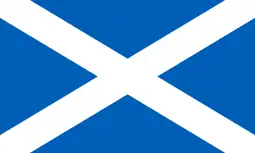 Dan Parks, (Scotland)
Dan Parks, (Scotland)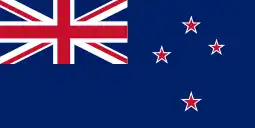 Steve Devine, (New Zealand)
Steve Devine, (New Zealand) Pierre Hola, (Tonga)
Pierre Hola, (Tonga) Des Tuiavi'i, (Samoa)
Des Tuiavi'i, (Samoa) Campese Ma'afu, (Fiji)
Campese Ma'afu, (Fiji) Sitiveni Mafi, (Tonga)
Sitiveni Mafi, (Tonga) Matthew Jarrett, (Malta)
Matthew Jarrett, (Malta)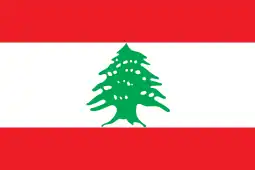 Ben Abood, (Lebanon)
Ben Abood, (Lebanon) Elias Sarkis, (Lebanon)
Elias Sarkis, (Lebanon) Jason Khoury, (Lebanon)
Jason Khoury, (Lebanon) Anthony Manassa, (Lebanon)
Anthony Manassa, (Lebanon) Ben Volavola, (Fiji)
Ben Volavola, (Fiji) Zac Guildford, (New Zealand)
Zac Guildford, (New Zealand) Wayne Ngaluafe, (Tonga)
Wayne Ngaluafe, (Tonga) Sione Tau, (Tonga)
Sione Tau, (Tonga)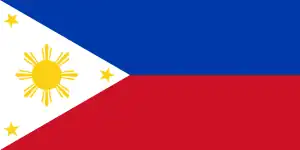 Daniel Ricky Kucia, (Philippines)
Daniel Ricky Kucia, (Philippines) David Lolohea, (Tonga)
David Lolohea, (Tonga) Albert Tuisue, (Fiji)
Albert Tuisue, (Fiji) Ned Rush Stephenson, (Philippines)
Ned Rush Stephenson, (Philippines) Michael Ala'alatoa, (Samoa)
Michael Ala'alatoa, (Samoa)
Current Super Rugby players
- Salesi Ma'afu, (Brumbies)
- Sam Wykes, (Western Force)
- Rory Sidey, (Waratahs)
- Alofa Alofa, (Waratahs)
- Cameron Orr, (Melbourne Rebels)
- Jack Debreczeni, (Chiefs)
- Michael Ala'alatoa, (Crusaders)
- Allan Alaalatoa, (Brumbies)
- Tiaan Swanepoel, (Lions)
References
- Sources
- "Football. District club at Burwood". The Sydney Morning Herald. 29 March 1900. Retrieved 14 April 2017.
- "Sydney Rugby Premiership". Referee. Sydney. 3 September 1902. Retrieved 14 April 2017.
- "Rugby – The new order". The Sydney Morning Herald. 11 March 1995. Archived from the original on 14 April 2017. Retrieved 14 April 2017.